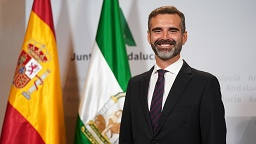 Ramón Fernández-Pacheco Monterreal
Ramón Fernández-Pacheco Monterreal
 Ramón Fernández-Pacheco Monterreal
Ramón Fernández-Pacheco Monterreal
La evolución reciente de los mercados agrarios ha incrementado la preocupación en torno a su volatilidad y su posible impacto en la actividad agraria. Desde la reforma de 1992, las diferentes reformas de la PAC han tendido hacia la desarticulación de los mecanismos de gestión de mercados creados en los orígenes de esta política. Las negociaciones internacionales en el seno de la OMC han supuesto un argumento más a favor de esta tendencia. La Ronda de Uruguay del GATT (precursora de la actual OMC) supuso el impulso definitivo a la reforma llevada a cabo en 1992, con la que se dieron los primeros pasos hacia la liberalización de los mercados agrarios europeos. Las nuevas negociaciones comerciales para una mayor liberalización del comercio internacional han impulsado igualmente las siguientes reformas de la PAC, como fue el caso de la Agenda 2000, que profundizaba los aspectos ya existentes en la reforma de 1992, así como la reforma de 2003, que mediante la introducción del desacoplamiento de las ayudas pretendía mejorar la posición negociadora de la UE en la Ronda de Doha.
En el presente estudio se analizan los mecanismos de gestión de mercados y de riesgos en agricultura que existen o han existido en la UE y en sus Estados miembros, así como los instrumentos de gestión empleados en las principales potencias agrarias mundiales. Para cada grupo de mecanismos de gestión, se muestra un cuadro resaltando sus principales ventajas y desventajas de cada uno de los instrumentos, así como las posibilidades de desarrollo futuro. Finalmente, se analizan las limitaciones impuestas por la OMC así como las perspectivas futuras de desarrollo de las negociaciones agrarias en este organismo.
"The future of the CAP after 2013. Markets and risks management in agriculture".
The recent development of agricultural markets has increased concern with regards to their volatility and their possible impact on agriculture. Since the reform of 1992, the different reforms of the CAP have been in favour of dismantling the markets management systems created in the origins of this policy. International negotiations within the WTO have been a key element in favour of this trend. The GATT (forerunner of today’s WTO) Uruguay Round was the definitive boost to the reform carried out in 1992 that implied the first steps to the liberalisation of European agricultural markets. The new commercial negotiations for a greater international trade liberalisation have equally boosted the following reforms of the CAP. This happened in the Agenda 2000, that went further into the aspects already existent in the reform of 1992 and, in the reform of 2003 which tried to improve the bargaining position of the UE in the Doha Round by decoupling support. In the present study, the markets and risks management systems, that exist or have ever existed in agriculture in the EU or in any of its Member States, are analysed together with the management tools used by the main agricultural world players. For each group of management systems, a that highlights the main advantages and disadvantages of each tool is shown together with the possibilities of future development. Finally, the restrictions imposed by the WTO are analysed together with the future development prospects of agricultural negotiations within this body.